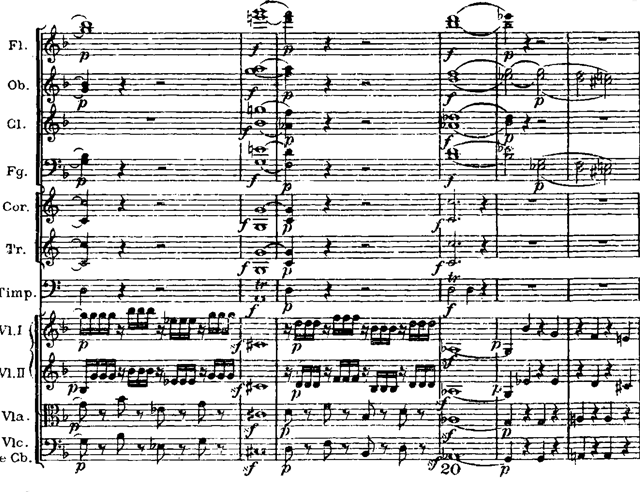Mozart completed Don Giovanni in 1787, and the opera was premiered in Prague on October 29, 1787. Don Giovanni is one of the three operas that resulted from Mozart’s collaboration with the great librettist Lorenzo Da Ponte (the other two operas being Le nozze di Figaro and Cosi fan tutte). Mozart himself called his opera dramma giocosso (literally “merry drama”) and here in the overture we can see how drama and comedy shift as quickly and as unpredictably as only one man – Mozart – could do.
The overture begins with the Commendatore theme. The tragic chords of the very beginning, the following ostinato rhythm, as well as the ascending and descending lines in the first violins and flutes create the impression of something fateful to follow. Contrasting with the general dark mode of the introduction of the overture is the sonata allegro with its typical Mozartean wit and energy.
The second theme of the sonata allegro deserves special attention: its forte–piano contrast clearly represents the Don Giovanni–Leporello tandem. Originally Mozart designed the overture to lead directly to the music of the first act, showing that the overture is an inseparable part of the entire drama.
It is a well known fact that it took only one day for Mozart to complete the overture to the opera (and that day happened to be the day before the opera’s premiere). After the death of Mozart, Johann Andre adopted the end of the overture for concert performance, and it is Andre’s version that you will hear today.
Overture to Don Giovanni
K. 527
Composed in 1787
By Wolfgang Amadeus Mozart






